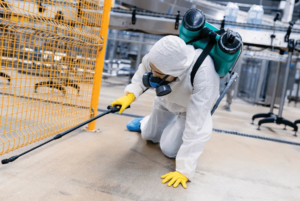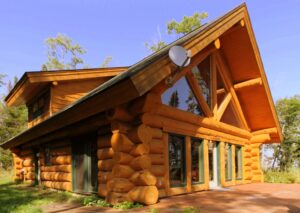Pest Control Ballwin MO is the effort to prevent or reduce the number of pests causing harm. It involves various tactics. When selecting and applying pesticides, it is important to consider the effect on non-target organisms.
Look for gaps and openings that pests can use to enter your home. Check screens, under cabinets, in walls, and attic spaces regularly.

Bed bugs were once thought to be associated only with crowded and dilapidated housing, but they have undergone a major resurgence. They can now be found in even the finest hotels and living accommodations. The reasons for this resurgence are not understood. Still, they may involve increased global travel and commerce, ease of movement of infested items from one location to another, resistance to some of the pesticides that were once used to control them, and other factors.
The best approach to controlling bed bug infestations is a combination of sanitation and habitat modification tactics. This includes preventing people from bringing these insects into homes on second-hand clothing, furniture or electronics, and keeping rooms as clean as possible to make it difficult for the bugs to find food. Managers of hotels, furnished apartments, dormitories and homeless shelters should train staff to recognize early signs of bed bug activity and to take prompt action. It also helps to keep room furnishings in good repair, vacuum frequently, and remove clutter to reduce places where the bugs can hide.
It’s important for property owners and occupants to cooperate with pest controllers who are called in to treat for bed bugs. They should provide access to all areas of the building and reduce or eliminate excess clutter so that it is easier to inspect. This decluttering should include removing clothes from drawers and closets and double-bagging them in clear plastic bags. It’s also important to remove mattresses and box springs from their frames and place them against the wall for treatment. Infested beds, folding cots and sleeper sofas should also be removed for treatment.
It’s a good idea to purchase protective covers for mattresses and box springs that seal them. These will trap the bugs inside and prevent them from spreading to other areas of the home or escaping from treatment. Washing infested clothing and linens in hot water and drying them in a dryer for 30 minutes at high heat should kill any active bed bugs. Non-washables can be isolated in black bags and left outside on a warm day to kill the bugs (the warmer the temperature, the faster they will die). Or, they can be put in the freezer at 0 degrees Fahrenheit.
Termites
Termites are detritophagous eusocial insects that consume wood, leaf litter and soil humus. When termites infest a home, they cause significant damage by tunneling through the structure’s foundation and into the interior of walls, floors and ceilings. According to the National Pest Management Association, termite infestations do $5 billion worth of damage each year. Fortunately, you can prevent an infestation by being vigilant and looking for telltale signs of termite damage.
Hollow-sounding wood is a common indicator of termite presence in your home. Termites create tunnels in the wood and leave droppings known as frass on the surface of the wood. If you hear hollow-sounding wood in your home, it’s important to contact a pest control expert right away.
Other indicators of a termite infestation include mud tubes and paint damage. Mud tubes are created when the subterranean termites build nests from mud and connect to their food source. They look like tubes about the width of a pencil and are found on the ground, inside and outside your home. Seeing them on the foundation of your home is another indication that you have an issue.
Infestations are also characterized by paint damage, which occurs when the termites tunnel through the drywall and allow moisture to enter the space between the drywall and the paint. This causes the paint to bubble and peel. In addition, if you see swollen baseboards, sagging floors or other signs of moisture problems, it could be a sign of a termite infestation.
During the spring, a termite colony will produce winged reproductive offspring, or swarmers. The swarmers will leave the original colony to start new colonies with their mates. When they land, they will shed their wings. During this time, you may notice small piles of discarded wings throughout your home.
There are several ways to treat a termite infestation, including bait stations and conventional liquid insecticides. It’s also important to reduce the possibility of a termite infestation by eliminating possible food sources and addressing moisture problems. Homeowners can help by repairing plumbing leaks and reducing woodpiles in the yard.
Mosquitoes
Mosquitoes are an important part of many ecosystems, but they are also annoying pests that carry disease-causing germs. These insects have a distinctive appearance and are known for their bites. Some mosquitoes can spread serious diseases like malaria, dengue fever and yellow fever. They can also cause allergic reactions and stings. Mosquitoes are a common nuisance around homes and businesses. They are found all over the world and breed in large bodies of water or other damp habitats. These include marshes, wetlands, flood plains, tree holes, plant axils and even the water-filled leaf trays of bromeliads.
After hatching, young mosquito larvae harvest nutrients from the water for several weeks. They have a unique chirping noise that helps them locate breeding and resting sites. In addition, they can sense the sound of wingbeats from conspecific male and female mosquitoes, adjusting their own wingbeat frequency to match. This creates a harmonious duet and is a prelude to mating. The sperm from the male is stored in the female’s body to fertilize her eggs.
Once mature, adult mosquitoes swarm together in mating swarms. During mating, male mosquitoes transfer a cocktail of chemicals to the female. These chemicals change the female’s behaviour from mate-seeking to blood-feeding. Female mosquitoes need a blood meal to produce their eggs.
Insecticides are the main tool for controlling mosquitoes, but they aren’t without their environmental impacts. Many of the over-the-counter sprays and yard treatments available to consumers contain toxic substances that can damage the environment. They kill non-target fly species and beneficial insects, and they contaminate soil and waterways with toxic residues.
Integrated mosquito management strategies can reduce the need for pesticides, including reduced habitat creation and improved stormwater management. The use of native plants in landscapes can help reduce the amount of ponding and flooding that provides breeding habitat for mosquito larvae. Ponds and other natural water sources should be treated with antifouling agents to remove sediment and mud, which can block the emergence of mosquito larvae.
In addition, reducing the amount of vegetation around pond edges and the outside of houses can reduce mosquito numbers, as can the use of mosquito-repellent products such as DEET and permethrins. Some people can also use mosquito misting devices that release a liquid pesticide over a targeted area. This type of application is more localized than fogging, and it requires less specialized equipment and personnel.
Fleas
Fleas are tiny reddish-brown insects that feed on the blood of mammals and birds. They have flat bodies and strong legs that allow them to jump long distances to find a host. Fleas can be brought indoors on pets or wild animals that visit kennels, pet shops, parks and yards. They also may be carried in on shoes, clothing and furniture. Once inside a home, fleas can spread to other rooms through cracks and crevices. A moderate to severe flea infestation can require months to eradicate. Effective flea control requires simultaneous, coordinated efforts involving sanitation and pest treatments of both the pet and the premises.
Sanitation involves washing rugs, carpets and pet bedding frequently to remove flea eggs. Vacuuming regularly (daily or at least weekly) removes up to 95% of the eggs, as well as some larvae and adult fleas. Regular bathing with a mild detergent or shampoo reduces the number of adults and larvae on dogs, cats, birds and rabbits. Bathing is especially beneficial for heavily infested dogs and cats.
In the house, a thorough, carefully conducted flea treatment with an adulticide plus an insect growth regulator is important for effective control. It’s especially important to treat areas where pets sleep and rest. This includes beds, kitty litter boxes, cat trees, crates and kennels. It is also a good idea to vacuum and sweep floors, and to move and clean furniture to get at cracks and crevices where fleas hide.
Indoor treatments should be followed by a yard treatment with granular products that kill fleas and their larvae. It’s a good idea to rake and mowing the yard to expose the soil to sunlight, which helps reduce flea activity. It’s also a good idea to eliminate overhanging trees and brush, as well as to screen or seal crawl spaces, porches, and other openings where rodents (such as rats, mice, squirrels, chipmunks, raccoons, etc.) and wild animals (such as opossums and raccoons) may enter the crawl space or habitat.
Fleas in the larval and pupal stages are highly resistant to most pesticides. Consequently, it’s common to see some newly emerged adults weeks or even months after a flea treatment. This is because the pesticide has not yet had time to take effect on these developing stages of the life cycle.



